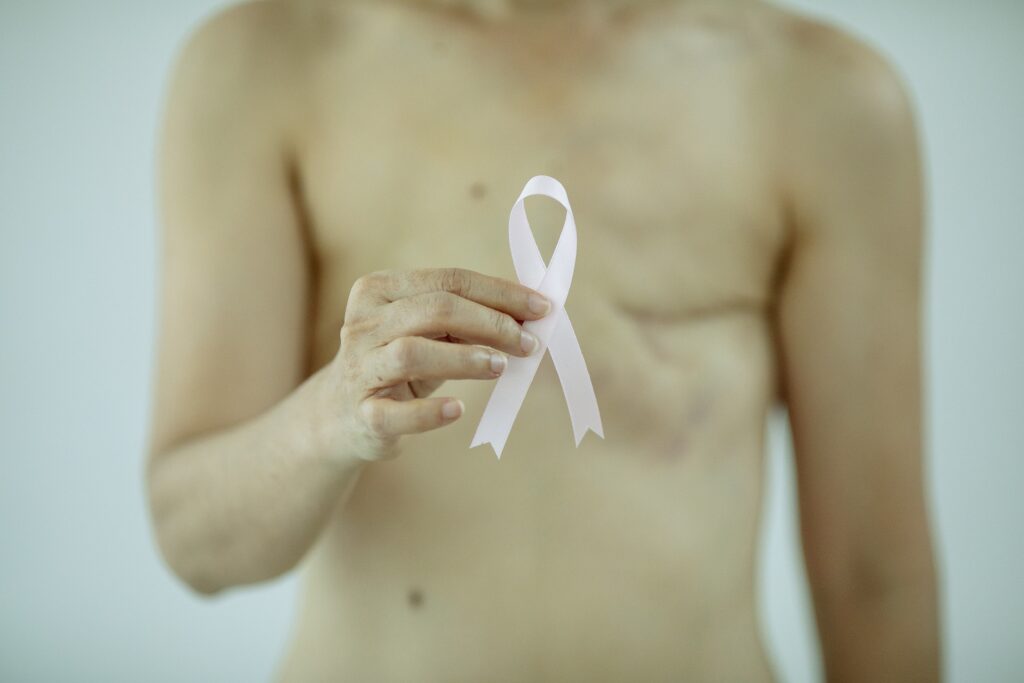
1 Early Stage Male Breast Cancer: Signs, Symptoms, and Treatment Options
Introduction to stage 1 early stage male breast cancer
Male breast cancer is a rare condition, but it is important to be aware of the signs and symptoms. In this article, we will explore stage 1 early stage male breast cancer, including the signs, symptoms, and treatment options available. Understanding this condition can help men detect it early and seek appropriate medical attention.
Signs and symptoms of male breast cancer
The signs and symptoms of male breast cancer are similar to those in women. It is crucial for men to be aware of any changes in their breasts and seek medical advice if they notice any abnormalities. Some common signs and symptoms of male breast cancer include:
- Breast lump: A lump or thickening in the breast or under the nipple is a common sign of male breast cancer. It is important to note that not all breast lumps are cancerous, but it is essential to have any lump evaluated by a healthcare professional.
- Nipple changes: Changes in the nipple, such as inversion (when the nipple turns inward), scaling, or discharge, may indicate male breast cancer. These changes should not be ignored and should be promptly discussed with a doctor.
- Breast pain: Although breast pain is not a common symptom of male breast cancer, some men may experience discomfort or tenderness in the breast area. If this pain persists or is accompanied by other symptoms, it is advisable to consult a healthcare professional.
It is important to remember that these symptoms can also be caused by non-cancerous conditions. However, it is always better to err on the side of caution and consult a doctor if any changes are noticed.
Understanding breast lumps in men
Breast lumps in men can be a cause for concern, but it is essential to understand that not all lumps are cancerous. In fact, the majority of breast lumps in men are benign (non-cancerous) conditions. Some common causes of breast lumps in men include:
- Gynecomastia: Gynecomastia refers to the enlargement of breast tissue in men. It is a common condition and is usually caused by hormonal imbalances. Gynecomastia can result in the formation of a lump or swelling in the breast area.
- Lipoma: Lipomas are benign tumors made up of fatty tissue. They can develop in various parts of the body, including the breast area. Lipomas are usually painless and have a soft, rubbery texture.
- Infection or inflammation: Infections or inflammation in the breast tissue can also result in the formation of lumps. These conditions may cause redness, warmth, and tenderness in the affected area.
If a breast lump is found, it is important to consult a healthcare professional for further evaluation. They will perform a thorough examination and may recommend additional tests, such as imaging or a biopsy, to determine the nature of the lump.
Diagnosis and staging of stage 1 early stage male breast cancer
To diagnose and stage stage 1 early stage male breast cancer, several tests and procedures may be performed. These include:
- Physical examination: The doctor will conduct a physical examination of the breast and surrounding areas to check for any abnormalities or lumps.
- Mammogram: A mammogram is an X-ray of the breast tissue. It can help detect any abnormal areas or masses that may be indicative of breast cancer.
- Biopsy: A biopsy involves the removal of a small sample of breast tissue for laboratory analysis. This procedure is performed to determine if the lump or abnormal area is cancerous.
Once a diagnosis of stage 1 early stage male breast cancer is confirmed, further staging tests may be recommended to determine the extent of the cancer and if it has spread to other parts of the body. These tests may include imaging scans, such as a CT scan or MRI, and blood tests.
Treatment options for stage 1 early stage male breast cancer
The treatment options for stage 1 early stage male breast cancer depend on various factors, including the size and location of the tumor, the overall health of the patient, and personal preferences. Some common treatment options for stage 1 early stage male breast cancer include:
Surgical options for male breast cancer
Surgery is a common treatment option for stage 1 early stage male breast cancer. The type of surgery performed will depend on the size and location of the tumor. Some surgical options for male breast cancer include:
- Lumpectomy: A lumpectomy involves the removal of the tumor and a small amount of surrounding healthy tissue. This procedure aims to preserve the breast while effectively treating the cancer.
- Mastectomy: A mastectomy is the surgical removal of the entire breast. In some cases, a double mastectomy (removal of both breasts) may be recommended to reduce the risk of cancer recurrence.
Radiation therapy for stage 1 early stage male breast cancer
Radiation therapy uses high-energy X-rays or other forms of radiation to kill cancer cells. It may be recommended after surgery to destroy any remaining cancer cells and reduce the risk of recurrence. Radiation therapy is usually delivered externally and is a localized treatment that targets the specific area where the tumor was removed.
Hormone therapy for male breast cancer
Hormone therapy is a systemic treatment that aims to block or lower the levels of hormones, such as estrogen, that can stimulate the growth of breast cancer cells. This treatment option is often used in male breast cancer cases where the tumor is hormone receptor-positive. Hormone therapy may include medications such as tamoxifen or aromatase inhibitors.
Chemotherapy for stage 1 early stage male breast cancer
Chemotherapy is a systemic treatment that uses drugs to kill cancer cells throughout the body. It may be recommended in cases where there is a higher risk of cancer recurrence or if the tumor has spread to the lymph nodes. Chemotherapy can be given orally or intravenously, and the specific drugs and treatment regimen will depend on the individual case.
Targeted therapy for male breast cancer
Targeted therapy is a treatment option that targets specific genes, proteins, or other factors that contribute to the growth and survival of cancer cells. This type of therapy is often used when other treatments have not been effective or when the cancer has specific genetic mutations. Targeted therapy may include medications such as trastuzumab or lapatinib.
Clinical trials for stage 1 early stage male breast cancer
Participating in clinical trials can provide access to new treatments and therapies that are not yet widely available. Clinical trials help researchers evaluate the effectiveness and safety of new treatments. Patients with stage 1 early stage male breast cancer may be eligible to participate in clinical trials, and it is recommended to discuss this option with a healthcare professional.
Coping with a diagnosis of stage 1 early stage male breast cancer
A diagnosis of stage 1 early stage male breast cancer can be overwhelming and emotionally challenging. It is important to remember that you are not alone, and there are support systems available to help you cope with the diagnosis and treatment process. Some strategies for coping with a diagnosis of stage 1 early stage male breast cancer include:
- Seeking support: Reach out to family, friends, or support groups to share your feelings and experiences. Talking to others who have gone through a similar journey can provide comfort and guidance.
- Educating yourself: Learn as much as you can about male breast cancer and your specific diagnosis. Understanding the condition and treatment options can help you make informed decisions and feel more in control.
- Taking care of yourself: Focus on self-care by maintaining a healthy lifestyle, eating nutritious foods, getting regular exercise, and managing stress. Taking care of your physical and mental well-being is crucial during the treatment and recovery process.
Male breast cancer survival rates and prognosis
The prognosis for stage 1 early stage male breast cancer is generally favorable. The 5-year survival rate for this stage of male breast cancer is approximately 100%. However, it is important to note that individual cases may vary, and survival rates can depend on various factors, such as the age and overall health of the patient, response to treatment, and the presence of any additional risk factors.
Regular follow-up appointments and ongoing monitoring are essential to detect any potential recurrence or new developments. It is important to maintain open communication with your healthcare team and report any changes or concerns promptly.
Conclusion
Stage 1 early stage male breast cancer is a rare condition, but it is crucial to be aware of the signs, symptoms, and treatment options available. Prompt detection and appropriate medical attention can significantly improve the prognosis and increase the chances of successful treatment. If you notice any changes in your breasts or experience any symptoms, it is important to consult a healthcare professional for further evaluation. Remember, early detection saves lives.
If you or someone you know is experiencing any symptoms or concerns related to male breast cancer, please seek medical advice immediately.

